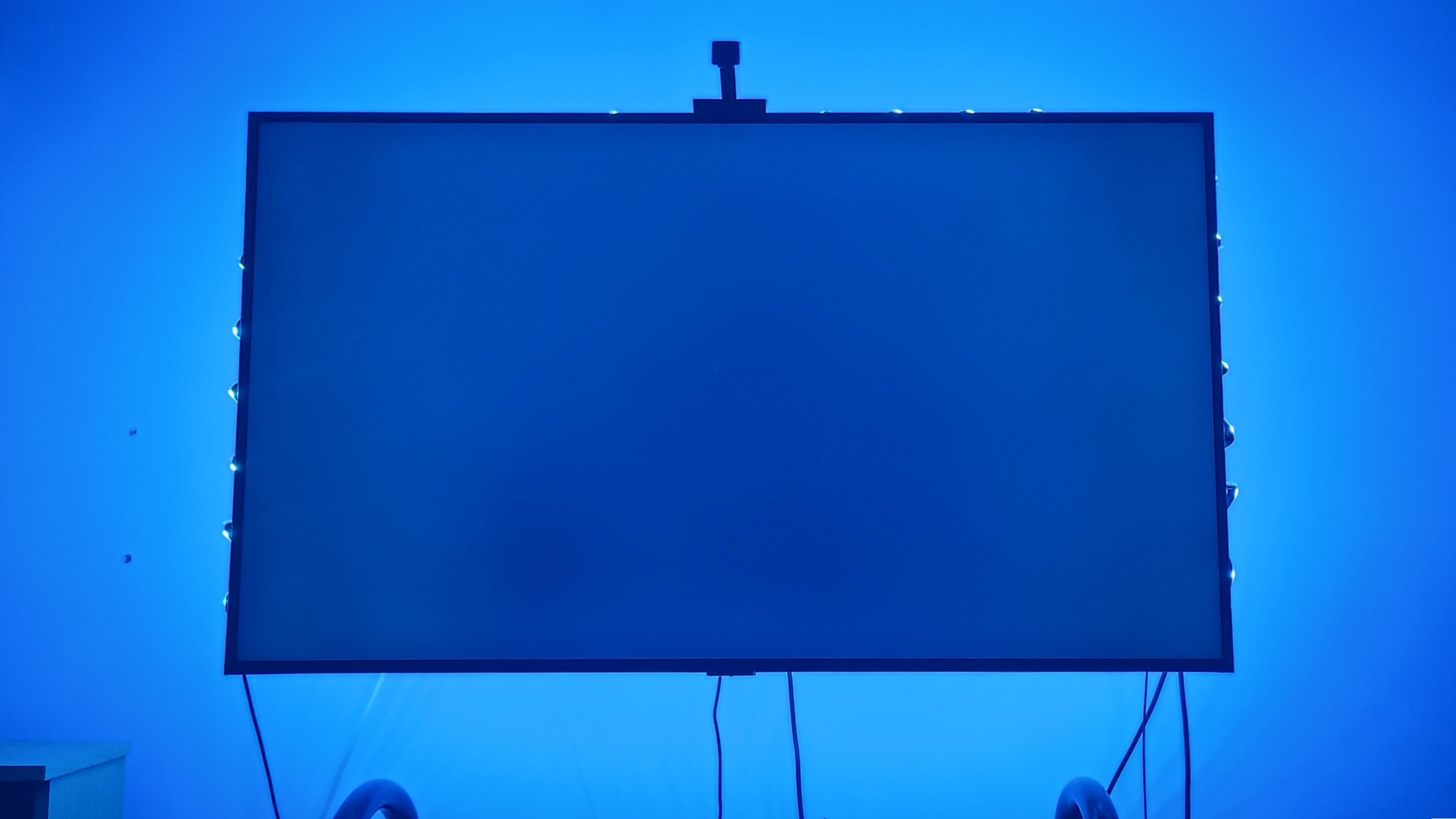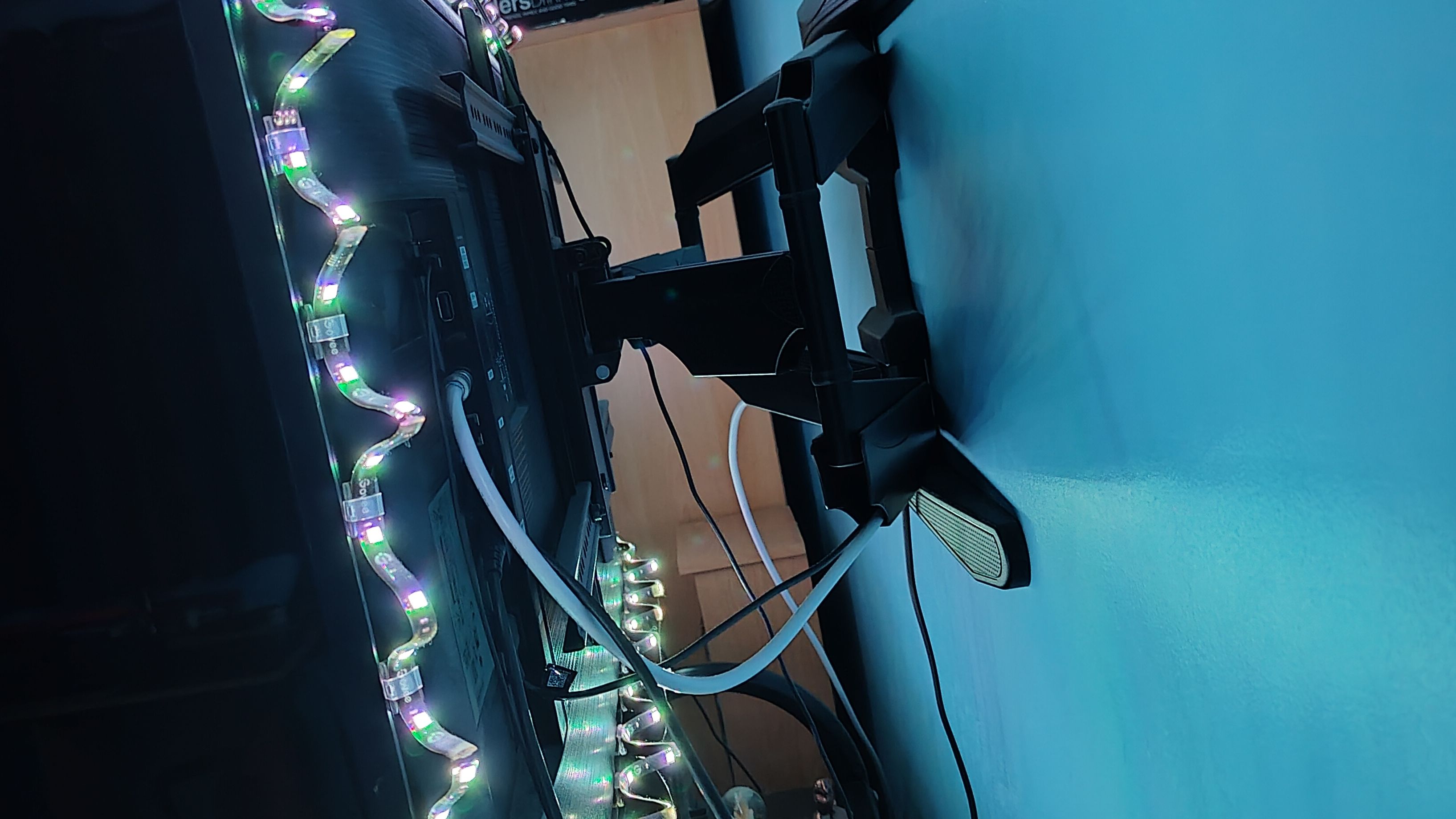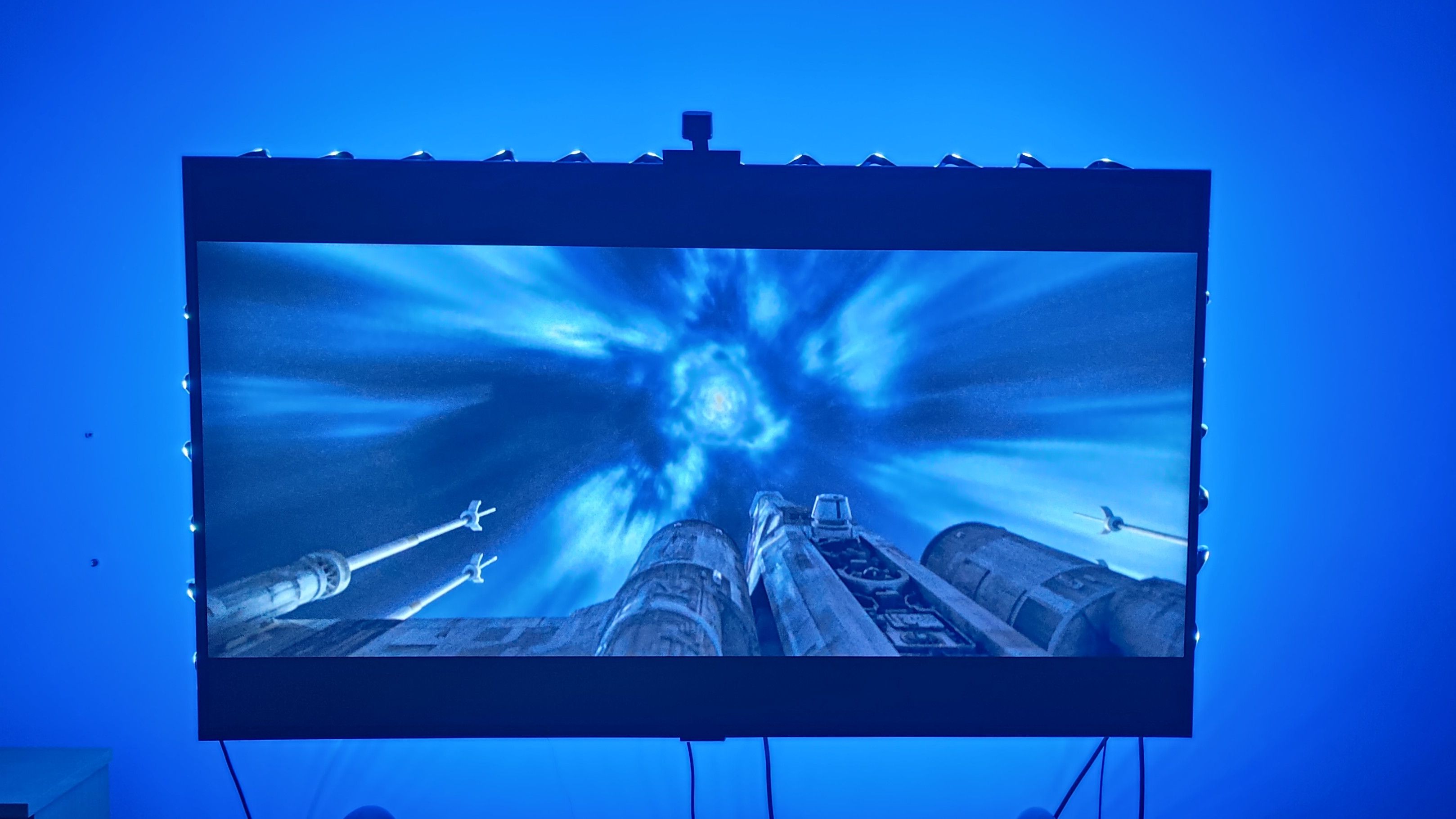I've used an Ambilight-esque LED lightstrip on my TV for years now – and I'm still torn
LED lightstrips from the likes of Govee and Philips can make for an immersive experience (sometimes)

A few years ago, I committed what some in the AV space would call a cardinal sin: I added a lightstrip to the back of a TV. Cue a nice talking point for any visitors – and a mixture of curiosity, interest and outright horror when I revealed this to the What Hi-Fi? team.
For the uninitiated, LED lightstrips are strips of LEDs that clip to the edge of your TV and project colours onto the wall behind. The particular model I purchased, the Govee DreamView T1, also came with a camera that points at the screen and syncs the lights with the on-screen colours. So if my screen features a green field, the external lights will turn green as well – creating what should be an immersive experience that extends beyond the screen.

Other options are available, of course – HDMI sync boxes remove the need for a camera and read the signal directly from your trusty HDMI cable, while Philips has long led the charge by building the technology into its Ambilight TVs.
Philips has been experimenting with the technology since 2004, and continues to innovate with the latest upgrade, Ambilight Plus, which launched only last year.
Now my trusty lightstrip and camera set-up would struggle to match the nuance and detail of Philips' long-running technology, but given that such a thing can be added to any TV for as little as £50 / $65 / AU$100, it's hard to go wrong.
It was 2023 when I took the plunge, snapping up a Govee Dreamview during the Black Friday sales and clipping it to my TV. Not the main, living room TV, mind you, but a budget bedroom set-up that would still see plenty of use.
And the all-important results? It's safe to say that the LED lightstrips are transformative – in certain viewing situations.
The latest hi-fi, home cinema and tech news, reviews, buying advice and deals, direct to your inbox.
The lightstrips work particularly well in the sci-fi genre: blasting into hyperspace in Star Wars lights up the whole room with a bright blue, wormhole-esque effect, while a spaceship-set episode of Doctor Who feels fittingly futuristic with a bright blue hue glistening in the background.
The same can be said for gaming and animation – booting up the Nintendo Switch fills the room with a satisfying shade of red, while the Spider-Verse movies effectively turn my set-up into a rainbow rave as colours cascade off the wall.

On the flipside, more grounded film and TV content does little to test the lightstrips. Good Will Hunting is one of my favourite films, but it barely troubles the LEDs, while most linear TV produces only a basic white light, to the point that you quite often forget it’s there.
Whatever the content, the lights were losing the battle during the summer months. Unless you have a dedicated home theatre space or are happy to close the curtains on a bright summer day, the lightstrips often strain against ambient light even with the brightness cranked up high. That will obviously be less of an issue with newer, brighter light strips, though.
Conversely, the lights come alive on dark winter nights. If you don't quite fancy sitting in the dark during depressing winter nights but don't want full room lights to ruin the immersion, striplights offer a compelling middle ground. There are worse ways to while away a winter than snuggled up in front of the TV while colour blasts your room.
The Govee app also lets you control the lights manually, and it gives you the option to sync your lights to the TV audio or use AI to create a light show that matches your description. Personally, I find most of these options to be far too distracting – though making them twinkle like Christmas lights over the festive period is suitably cosy.
Are LED strip lights a must-have for immersion in your dedicated home cinema? Probably not. But if you want to add a bit of pizzazz and a splash of colour to your movie or game evenings, there are definitely worse options.
MORE:
Read our Philips OLED909 review
And our Philips OLED809 review
Check out our picks for the best TVs

Daniel Furn is a staff writer at What Hi-Fi? focused on all things deal-related. He studied Magazine Journalism at the University of Sheffield before working as a freelance journalist covering film, TV, gaming, and consumer tech. Outside of work, he can be found travelling far-flung corners of the globe, playing badminton, and watching the latest streaming sensation (in 4K HDR, of course).
You must confirm your public display name before commenting
Please logout and then login again, you will then be prompted to enter your display name.